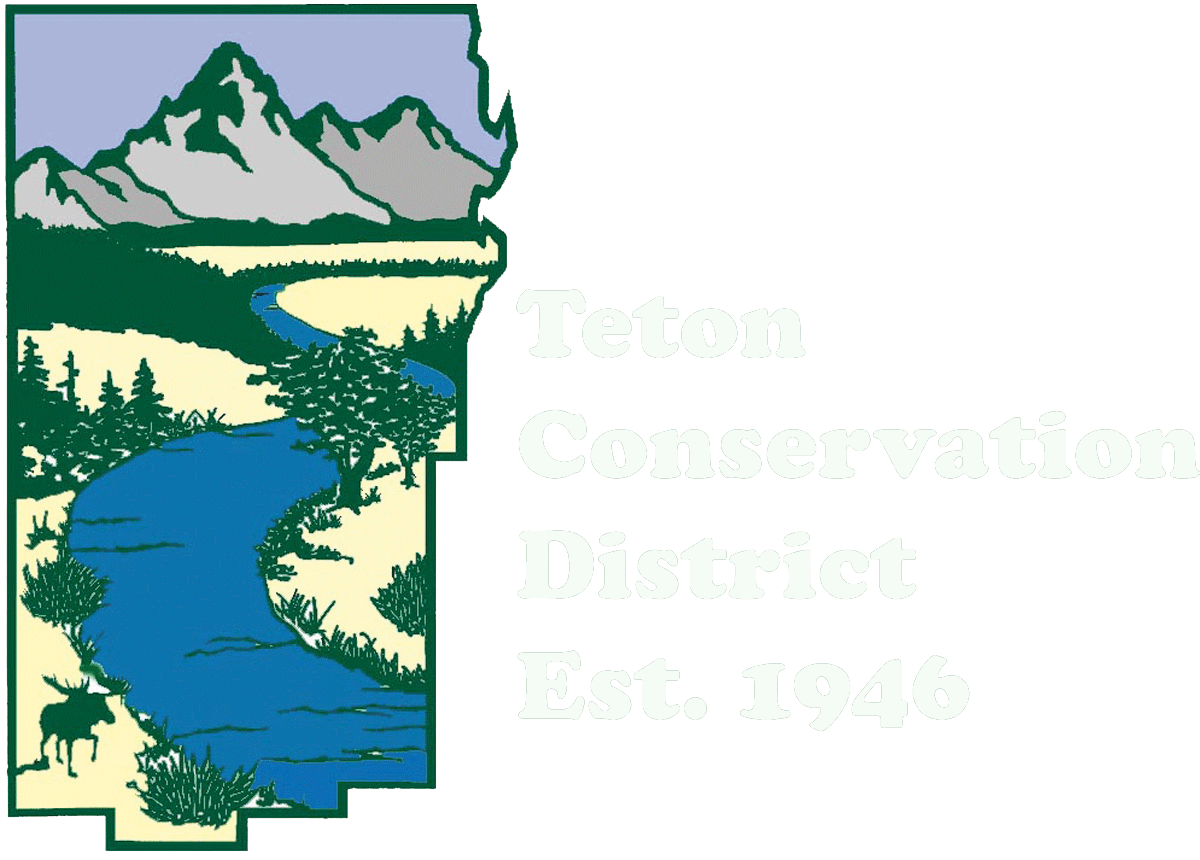Kelsey Ruehling (left) and field technician Emma Román, a senior at Middlebury college, collect water samples in Fish Creek in summer 2021.
University of Wyoming Master’s student Kelsey Ruehling (pronounced ‘ruling’) is on a mission to find out where microbial pollution in Fish Creek and Flat Creek is originating from.
Sections of both creeks were designated as “impaired” by the Wyoming Department of Environmental Quality in 2020 for Escherichia coli (E. coli), a bacteria found in the intestines of all mammals, including humans. There are more than 700 strains of E. coli which are expelled into the environment by their warm-blooded hosts through fecal matter. Most strains are either harmless or benefit a healthy digestive track, however, certain pathogenic strains of E. coli can cause stomach cramps, nausea, vomiting, and diarrhea. Because E. coli can be cultured quickly and inexpensively in a laboratory, these bacteria are often used by scientists as a proxy or indicator for fecal contamination and the presence of pathogens. The risk of illness from ingesting a pathogenic strain of E. coli or another fecal pathogen is why sections of Fish and Flat Creeks exceed recreational use standards, which means they are not considered safe by the Wyoming Department of Environmental Quality for full-body contact.
In order to best mitigate sources of microbial pollution, we need current research to understand where it’s coming from. Kelsey spent the summer regularly sampling four sites on Fish Creek and seven sites on Flat Creek and its tributaries (Game and Cache Creeks). She also collected about 100 fecal samples near stream sites to identify which species may be contributing fecal bacteria to streams. Kelsey used two EPA-approved methods to quantify E. coli and extracted DNA from the water and fecal samples to characterize their bacterial communities. Kelsey hopes that studying E. coli and the bacterial community as a whole will improve our understanding of what kinds of fecal matter may be contributing to elevated levels of E. coli and other pathogenic bacteria in Flat and Fish Creeks.
Kelsey and Emma measure streamflow velocity at intervals across the creek.
“Kelsey’s research fills a much-needed data gap—where is fecal contamination in Fish Creek and Flat Creek coming from? Currently, we can guess or we can use 15-year-old data, but in the end, this research that will allow time and money to be allocated efficiently and generate the result we all want—water that is safe for humans, pets, and wildlife,” says Carlin Girard, Water Resources Specialist for Teton Conservation District.
The last time E. coli research was conducted in Fish Creek was in the early 2000s—that study found that over 50% of the E. coli load in the stream originated from avian, rodent, and deer/elk species. Less than 20% originated from sources related to human activities, including 7% from dogs, 6% from wastewater, 4% from bovines, and 2% from horses.
Kelsey completed data collection in summer 2021. She’ll spend this winter analyzing data and writing her thesis. Check back in to read about the results from Kelsey’s study in 2022.
Learn more about Kelsey’s research at www.kelseyruehling.weebly.com. This research is supported by Teton Conservation District, the Wyoming Water Research Program, Jackson Hole One Fly, University of Wyoming, and U.S. Geological Survey.

